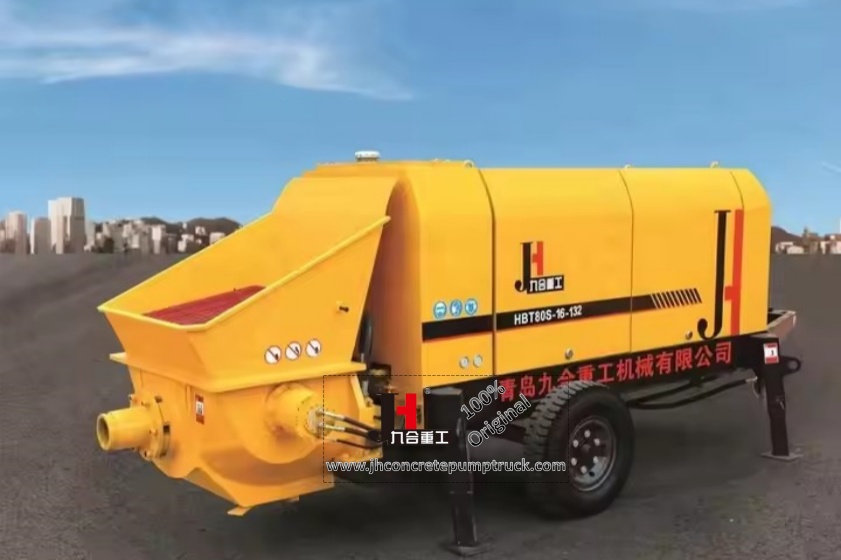News
Reduce pipeline blockage and pipe burst accidents
Oct. 09, 2024
How to reduce pipe blockage accidents during the use of concrete pump trucks, how to avoid pipe bursting when the pump pipe is blocked, and how to reduce the damage to surrounding personnel and equipment when the pump pipe bursts.
Concrete pump truck
(1) To avoid pipe burst accidents, experienced pumping operators must be selected to control the concrete pump. Only operators who hold recognized qualifications, have received full-time training and have been proven to have the ability to operate can operate the pump truck. When the resistance in the delivery pipe is high, do not force pumping, and repeat the forward/reverse pumping action. When the pump pipe is blocked, do not blindly increase the pressure for pumping. First, use a slightly higher pumping pressure to pump intermittently to pulsate the blocked concrete body. If intermittent pumping cannot flush the blocked concrete, use a rubber hammer to knock along the pump pipe, determine the blockage position according to the sound, and then pump while knocking the blockage position. Generally, the blockage will be loosened by the knocking vibration and can be pumped out. If the blocked concrete still cannot be flushed, reverse pumping should be performed 3 to 5 times to release the pressure in the pipeline, and then the concrete pump should be turned off. After confirming that there is no pressure in the pump pipe, disassemble the pipe section of the blocked pipe, remove the blocked concrete in the pipe, and then assemble the pump pipe and pump again.
(2) Before the concrete pump starts working each time, professionals must be arranged to knock each section of the pump pipe, especially the elbow section, to check the wear of the pipe wall. If the inner wall of the pump pipe is severely worn, the thickness of the pump pipe is not enough to withstand the pumping pressure, the pump pipe has been hit during use, or the pump pipe is damaged or severely deformed, the pipe section must be replaced immediately to avoid the local section being unable to withstand the design pressure during the pumping process. At the same time, before each use, the delivery pipe clamp should be checked for looseness and damage, and reinforced and replaced in time to avoid the pump pipe being disconnected during the pumping process, and the aggregate flying out and causing injuries.
(3) Before using the concrete pump, the pressure gauge must be checked to see if it is intact and can display the pressure normally, so as to ensure that the operator can accurately grasp the concrete pumping pressure during the concrete pumping process and avoid the pumping pressure exceeding the maximum bearing capacity of the pump pipe. At the same time, the concrete pump pipe is a pressure-bearing component, and must be produced by the concrete pump manufacturer, matched, and qualified products. It is not allowed to use inferior products produced by other manufacturers that have not been tested for pressure.
(4) The service life of concrete pump pipes is related to the concrete pumping volume, the degree of dryness and wetness of concrete, the gradation of concrete, the roughness of sand and gravel aggregates, etc. Under normal circumstances, if it is well maintained, it can be used for two years. When the service life is reached, all pump pipes must be replaced immediately; at the same time, if the pumping is frequent, the concrete is relatively dry, and the aggregate is rough, the concrete material will increase the friction on the inner wall of the pump pipe, resulting in the thickness of the pump pipe not meeting the use requirements and shortening the service life. At this time, the inspection frequency of the pump pipe must be increased. If the overall inner wall of the pump pipe is found to be severely worn and the wall thickness cannot withstand the pumping pressure, the pump pipe must be replaced in advance. The service life of the hydraulic hose shall not exceed 6 years (including the storage time). Even if no visible damage is found, the hydraulic hose should be replaced within the specified time limit.
Previous: Maintenance of trailer concrete pump







